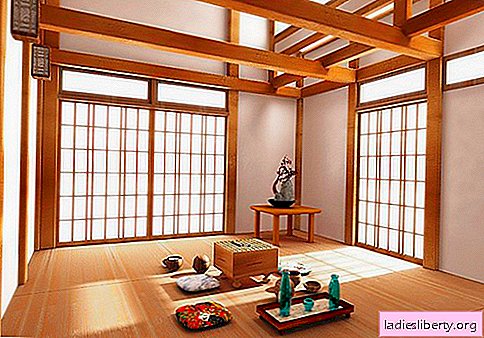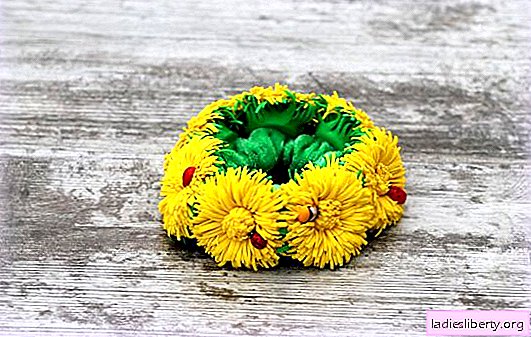
The Japanese style appeared mainly due to the climate of Japan. Constantly hot and humid weather forced the Japanese to build houses so that natural ventilation was present, that is, houses could be blown through by drafts all the time.
And on rainy and windy days, the road to drafts is easily blocked by sliding walls (shoji), which are a feature of most Japanese residential buildings.
Not fluffy carpets, which are usual for us, are put on the floors, but tatami - a rigid fabric stretched over wooden frames. Tatami are laid in guest rooms and bedrooms, and in the kitchen or, for example, in the hallway - ordinary, wooden floors.
Premises in Japanese homes are multifunctional and can be used in various capacities as needed. For example, with a large number of guests from the living room, it is easy to make a bedroom, for which it is enough to lay futons on the floor (Japanese national mattresses). In the morning, they are simply rolled up and put into a closet built into the wall.

One of the essential elements of Japanese housing is a dining table with short legs - kotatsu. Kotatsu must be in every home. Pillows are placed around it, on which it is comfortable to sit, and in case of cold weather a heater is placed under the table.

The whole interior is filled with national, decorative elements. For example, at the entrance they put a small straw barrel filled with pine branches, which in Japan are a symbol of long life and should share their energy with the inhabitants.
Naturally, you can not do without the traditional bonsai. Bonsai is placed in the most prominent place and is a source of inspiration. Decorate the house and the Japanese ellipsoidal lanterns, painted with hieroglyphs.

Another mandatory detail of the interior is netsuke - small figures, mostly depicting various gods, helping in business, giving health, attracting luck, etc. For them, they arrange a special niche in the place of honor - tokonomy.
Many, if not all, are aware of such hobbies of the Japanese as ikebana (compositions composed of twigs and dried plants) and origami (paper-made figures). Ikebana and origami occupy their niche in the interior and are present in almost every room.
The walls are usually hung with beautiful, colorful faith, painted in the national style (heavier decorations for thin walls are not suitable).
Observance of ancient traditions and minimalism - here, perhaps, are two main components of a true, Japanese interior.











